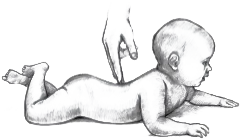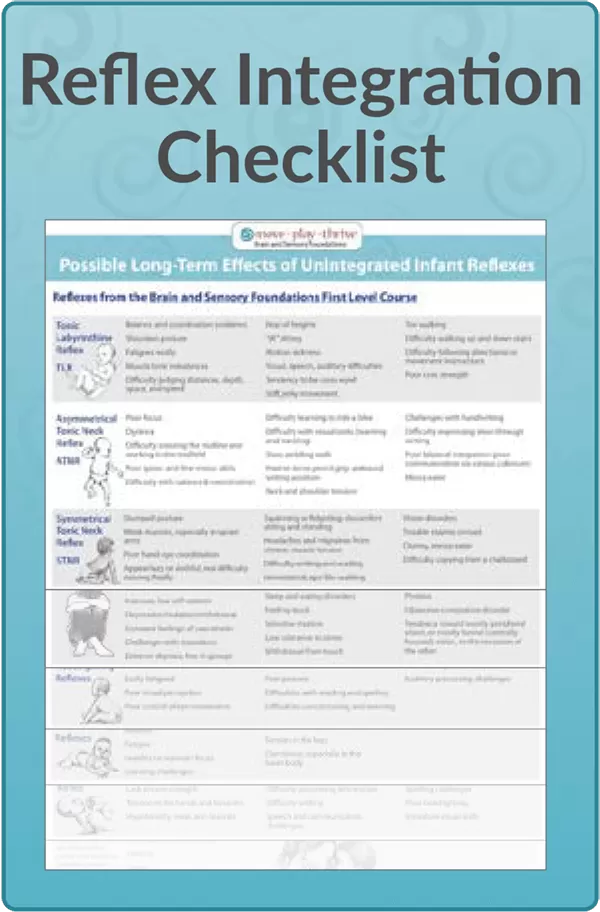Spinal Perez Reflex
 The Spinal Perez reflex is an automatic lifting of the head, chest, and pelvis when an infant’s spine is stimulated from the sacrum to the neck. In normal development the Spinal Perez is present at birth and integrates within 2-4 months. It is one of the key reflexes for addressing bedwetting.
The Spinal Perez reflex is an automatic lifting of the head, chest, and pelvis when an infant’s spine is stimulated from the sacrum to the neck. In normal development the Spinal Perez is present at birth and integrates within 2-4 months. It is one of the key reflexes for addressing bedwetting.
The Spinal Perez movement pattern is also useful for development because it breaks up the Tonic Labyrinthine reflex pattern by getting the core moving in the opposite direction as the limbs. In this way it sets the foundation to help integrate TLR in both flexion and extension. Spinal Perez also provides the basis for developing the Symmetrical Tonic Neck Reflex and the Headrighting reflexes.
As with the Spinal Galant reflex, the Spinal Perez impacts the functioning of the bladder: giving the Perez stimulus to an infant can result in automatic urination. In addition to elimination issues, if this reflex remains active beyond infancy individuals may display excess reactivity, agitation, and discomfort; particularly to tactile stimulation on the back.
When babies are born via Cesarean-section, the Spinal Perez reflex may not develop properly.
Possible Long-Term Effects of a Retained Spinal Perez include:
- Sensory processing issues
- Weak or unstable core
- Poor posture
- Low or high muscle tone
- Tactile hypersensitivity
- Poor bladder control, bedwetting
- Soiling past the age of 5
- Emotional instability
- Amphibian Reflex
- Asymmetrical Tonic Neck Reflex
- Birth and Bonding
- Crawling Reflexes
- Crossed Extensor Reflex
- Facial-Oral Reflexes
- Fear Paralysis Reflex
- Feet Reflexes—Plantar & Babkinski
- Foot Tendon Guard
- Hand Reflexes—Grasp, Palmar, and Babkin
- Headrighting Reflexes
- Infant Torticollis
- Landau Reflex
- Moro Reflex
- Parachute Reflex
- Pull-to-Sit Reflex
- Spinal Galant Reflex
- Spinal Perez Reflex
- Symmetrical Tonic Neck Reflex
- Tonic Labyrinthine Reflex
Sources
Blomberg, H. (2015). The rhythmic movement method: A revolutionary approach to improved health and well-being. Lulu.com.
Fletcher, M. A. (1998). Physical diagnosis in neonatology. Lippincott-Raven.
Goddard Blythe, S. (2023). Reflexes, movement, learning & behavior. Analysing and unblocking neuro-motor immaturity. Hawthorn Press.
Masgutova, S. (2007). Integration of infant dynamic and postural reflex patterns: Neuro-sensory-motor and reflex integration method [Training manual].
Perez reflex. (2009). In Mosby’s medical dictionary (8th ed.). Retrieved September 13, 2022, from http://medical-dictionary.thefreedictionary.com/Perez+reflex


